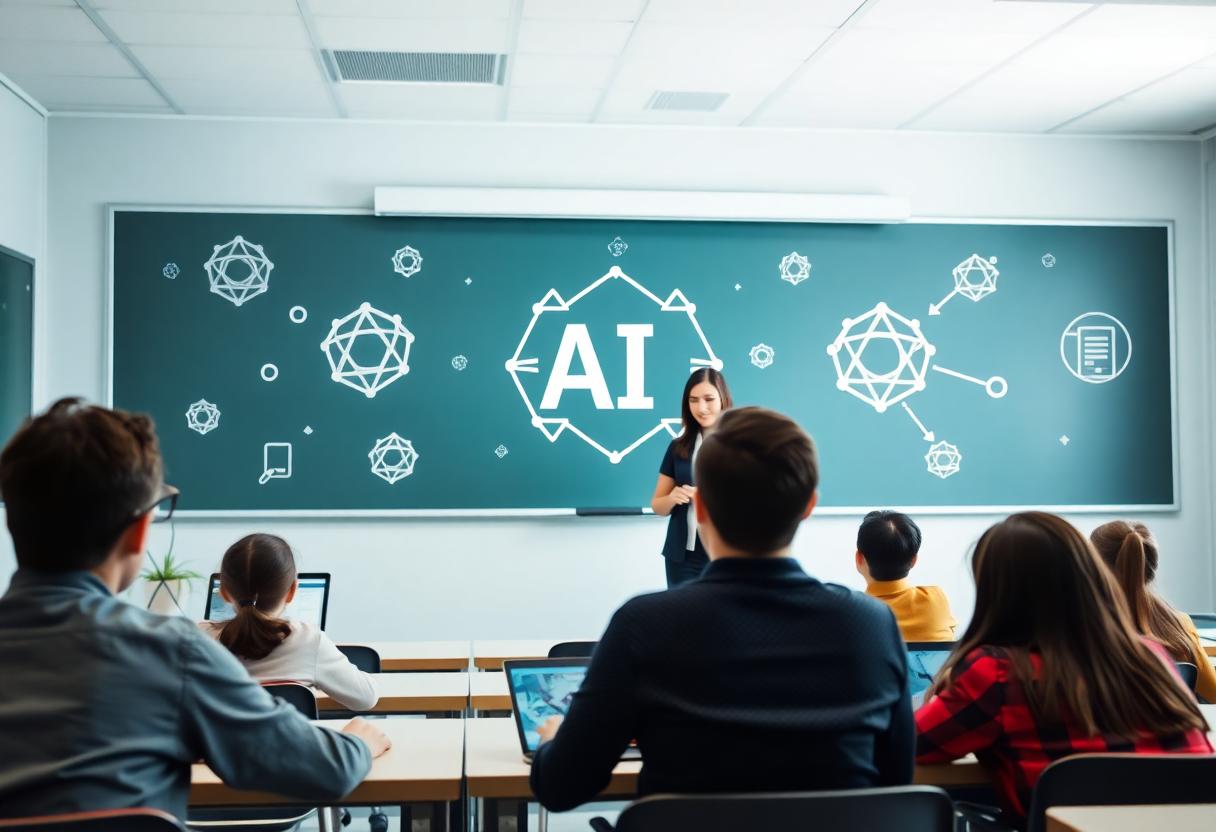Artificial Intelligence (AI) is revolutionizing education, offering tools to generate engaging educational materials. This article presents 10 tips on utilizing Text-to-Text tools like Google Gemini or ChatGPT to enhance teaching. Topics covered include personalized content generation, lesson planning, test and quiz creation, personalized feedback, example and exercise generation, supplementary material preparation, content adaptation, discussion and debate creation, communication management, and interdisciplinary project development. AI is portrayed as a versatile assistant that can streamline various aspects of teaching, improving material quality and saving time.
Enjoy:
- Over 60 AI tools to create quality content
- More time for creativity, stress-free
- Impactful content that attracts readers and visitors
All with just one click.
However, the importance of teacher expertise in ensuring content appropriateness is emphasized.
Tailoring Learning Experiences: Personalised Content Generation with AI
Tailoring learning experiences through personalised content generation with AI is revolutionizing education. With tools like Google Gemini or ChatGPT, teachers can create customised materials to meet the specific needs and interests of learners. AI algorithms can generate content that adapts to individual learning styles, abilities, and preferences, making the learning experience more engaging and effective. Whether it’s creating interactive lessons, generating practice exercises, or providing personalized feedback, AI enables educators to cater to each student’s unique requirements. By harnessing the power of AI, teachers can ensure that learners receive a tailored educational experience that maximizes their potential and fosters a love for learning. However, it is crucial for teachers to maintain their expertise in evaluating and ensuring the appropriateness of the AI-generated content.
Beyond the Classroom: Streamlining Lesson Planning and Resource Development
Beyond the Classroom: Streamlining Lesson Planning and Resource DevelopmentHarnessing the power of AI, educators can now streamline their lesson planning and resource development processes. With tools like Google Gemini or ChatGPT, teachers can generate personalized content that caters to the specific needs and interests of their students. AI can assist in creating lesson plans, suggesting relevant resources, and even generating supplementary materials to enhance the learning experience. This not only saves time for teachers but also ensures that students receive a tailored education that is engaging and effective. However, it is crucial for educators to have the necessary expertise to evaluate and adapt AI-generated content to ensure its appropriateness and quality for their students.
Interactive Assessments: Revolutionising Tests, Quizzes, and Feedback
Interactive assessments are transforming the landscape of traditional tests, quizzes, and feedback in education, thanks to the power of artificial intelligence. With AI tools like Google Gemini or ChatGPT, teachers can create engaging and interactive assessments that cater to the individual needs of learners. These assessments go beyond multiple-choice questions, incorporating interactive elements such as drag-and-drop, matching, and fill-in-the-blank exercises. AI algorithms can provide immediate feedback to students, highlighting areas of improvement and offering personalized suggestions for further study. This revolution in assessments not only enhances student engagement but also provides teachers with valuable insights into student performance, allowing them to tailor their teaching strategies accordingly. By harnessing AI, educators can create more dynamic and effective assessment experiences for learners of all ages.
As AI continues to reshape education, the potential for crafting engaging educational materials using AI tools is vast. From personalised content generation to streamlining lesson planning and revolutionising assessments, the possibilities are endless. However, it is crucial for educators to maintain competence and ensure the suitability of the generated materials. How can we strike a balance between harnessing AI’s capabilities and preserving the human touch in education? This question remains open for further reflection and exploration.
